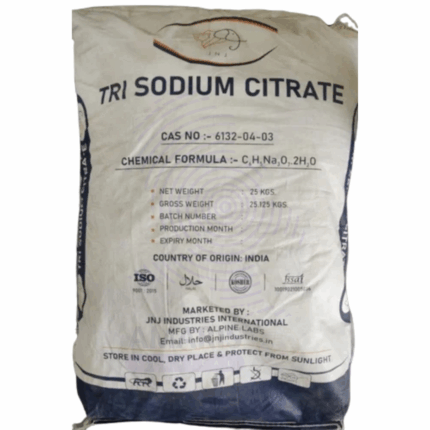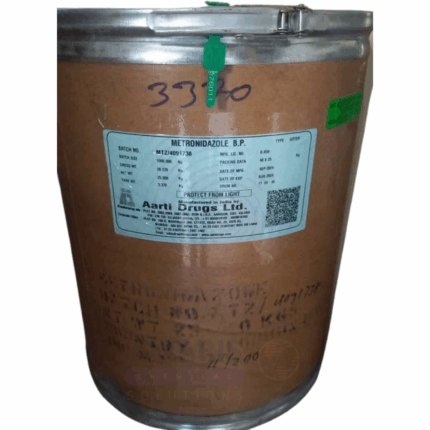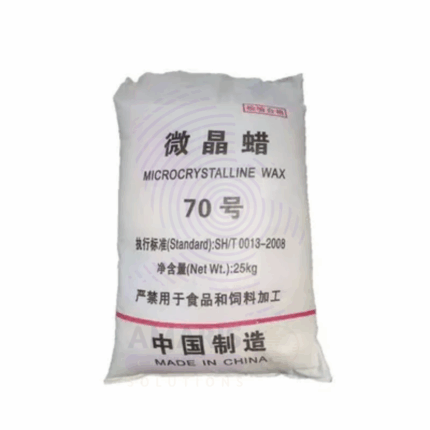Sodium Chloride BP Parenteral Grade
Sodium Chloride BP Parenteral Grade is a highly purified, sterile, and non-pyrogenic salt intended for intravenous, intramuscular, and subcutaneous administration. It is commonly used in medical and pharmaceutical settings as a key component of intravenous fluids, for rehydration therapy, electrolyte replenishment, and as a diluent for injectable drugs. This grade meets stringent pharmacopoeial standards (British Pharmacopoeia) ensuring safety and compatibility with parenteral use.
Sodium Chloride BP Parenteral Grade
Primary Uses
- Medical and Pharmaceutical Applications
- Used as a sterile isotonic saline solution for intravenous therapy to restore fluid and electrolyte balance.
- Serves as a diluent and solvent for various injectable medications.
- Employed in wound irrigation and cleansing during medical procedures.
- Used in dialysis solutions and other parenteral nutrition products.
- Laboratory and Research
- Utilized as a standard reagent in biochemical and clinical laboratories for preparing physiological buffers and solutions.
- Used in cell culture and microbiology as an isotonic solution.
Secondary Uses
- Cosmetics and Personal Care
- Incorporated in some sterile skin care and wound care products requiring pharmaceutical grade salt.
- Veterinary Medicine
- Used in veterinary parenteral therapies and fluid replacement.
Basic Identification Attributes
- Chemical Name (IUPAC): Sodium chloride
- Common/Trade Name: Sodium Chloride BP Parenteral Grade
- CAS Number: 7647-14-5
- HS Code: 2501.00.00
- Synonyms: Table salt, saline salt, pharmaceutical grade sodium chloride
Physical & Chemical Properties
- Physical State: Crystalline powder or granules
- Color & Odor: White, odorless
- Solubility: Highly soluble in water
- Purity: Typically >99.5% purity, free from endotoxins and pyrogens
- pH: Neutral in solution
- Density: Approx. 2.165 g/cm³
Safety & Hazard Attributes
- GHS Classification: Not hazardous under normal use
- Toxicity: Non-toxic at typical medical doses
- Exposure Limits: No specific occupational limits; standard hygiene practices recommended
Storage & Handling Attributes
- Storage Conditions: Store in a cool, dry, well-ventilated place away from moisture and contamination
- Container Type: Supplied in sterile containers or sealed pharmaceutical-grade packaging
- Shelf Life: Typically 2–3 years if stored properly
- Handling Precautions: Maintain sterility; use aseptic techniques for parenteral preparations
Regulatory & Compliance Attributes
- Complies fully with British Pharmacopoeia (BP) standards for parenteral use
- Manufactured in GMP-certified pharmaceutical facilities
- Approved by major regulatory authorities for injectable use (e.g., FDA, EMA)
Environmental & Health Impact
- Biodegradability: Naturally occurring inorganic salt; environmentally benign
- Ecotoxicity: Low environmental impact in typical disposal quantities
Bioaccumulation: Not bioaccumulative
Safety Handling Precautions
- PPE Required: Use gloves and masks during sterile handling to maintain contamination-free conditions
- Handling Guidelines: Avoid moisture contamination; follow sterile handling procedures
- Storage Measures: Keep containers tightly sealed in a dry environment
First Aid Measures
- Inhalation: Not applicable under normal use
- Skin Contact: Generally safe; rinse with water if irritation occurs
- Eye Contact: Rinse with water if accidental contact occurs
- Ingestion: Safe in prescribed medical doses; seek medical advice if overdose suspected
Firefighting Measures
- Fire Hazards: Non-flammable and non-combustible
- Extinguishing Media: Not applicable
- Special Precautions: None required


 Preservatives(food)
Preservatives(food) Flavor Enhancers
Flavor Enhancers Acidulants
Acidulants Sweeteners
Sweeteners Antioxidants
Antioxidants Colorants(food)
Colorants(food) Nutraceutical Ingredients (food)
Nutraceutical Ingredients (food) Nutrient Supplements
Nutrient Supplements Emulsifiers
Emulsifiers
 Collectors
Collectors Dust Suppressants
Dust Suppressants Explosives and Blasting Agents
Explosives and Blasting Agents Flocculants and Coagulants
Flocculants and Coagulants Frothers
Frothers Leaching Agents
Leaching Agents pH Modifiers
pH Modifiers Precious Metal Extraction Agents
Precious Metal Extraction Agents
 Antioxidants(plastic)
Antioxidants(plastic) Colorants (Pigments, Dyes)
Colorants (Pigments, Dyes) Fillers and Reinforcements
Fillers and Reinforcements Flame Retardants
Flame Retardants Monomers
Monomers Plasticizers
Plasticizers Polymerization Initiators
Polymerization Initiators Stabilizers (UV, Heat)
Stabilizers (UV, Heat)
 Antifoaming Agents
Antifoaming Agents Chelating Agents
Chelating Agents Coagulants and Flocculants
Coagulants and Flocculants Corrosion Inhibitors
Corrosion Inhibitors Disinfectants and Biocides
Disinfectants and Biocides Oxidizing Agents
Oxidizing Agents pH Adjusters
pH Adjusters Scale Inhibitors( water)
Scale Inhibitors( water)
 Antioxidants(cosmetic)
Antioxidants(cosmetic) Emollients
Emollients Fragrances and Essential Oils
Fragrances and Essential Oils Humectants
Humectants Preservatives
Preservatives Surfactants(cosmetic)
Surfactants(cosmetic) Thickeners
Thickeners UV Filters
UV Filters
 Fertilizers
Fertilizers Soil Conditioners
Soil Conditioners Plant Growth Regulators
Plant Growth Regulators Animal Feed Additives
Animal Feed Additives Biostimulants
Biostimulants Pesticides (Herbicides, Insecticides, Fungicides)
Pesticides (Herbicides, Insecticides, Fungicides)
 Active Pharmaceutical Ingredients (APIs)
Active Pharmaceutical Ingredients (APIs) Excipients
Excipients Solvents(pharmaceutical)
Solvents(pharmaceutical) Antibiotics
Antibiotics Antiseptics and Disinfectants
Antiseptics and Disinfectants Vaccine Adjuvants
Vaccine Adjuvants Nutraceutical Ingredients (pharmaceutical)
Nutraceutical Ingredients (pharmaceutical) Analgesics & Antipyretics
Analgesics & Antipyretics
 Analytical Reagents
Analytical Reagents Solvents(lab)
Solvents(lab) Chromatography Chemicals
Chromatography Chemicals Spectroscopy Reagents
Spectroscopy Reagents microbiology-and-cell-culture-reagents
microbiology-and-cell-culture-reagents Molecular Biology Reagents
Molecular Biology Reagents Biochemical Reagents
Biochemical Reagents Inorganic and Organic Standards
Inorganic and Organic Standards Laboratory Safety Chemicals
Laboratory Safety Chemicals Specialty Laboratory Chemicals(Special Laboratory Equipment)
Specialty Laboratory Chemicals(Special Laboratory Equipment)
 Demulsifiers
Demulsifiers Hydraulic Fracturing Fluids
Hydraulic Fracturing Fluids Scale Inhibitors(oil)
Scale Inhibitors(oil) Surfactants(oil)
Surfactants(oil) Drilling Fluids
Drilling Fluids
 Dyes and Pigments
Dyes and Pigments Bleaching Agents
Bleaching Agents Softening Agents
Softening Agents Finishing Agents
Finishing Agents Antistatic Agents
Antistatic Agents
 Admixtures
Admixtures Waterproofing Agents
Waterproofing Agents Sealants and Adhesives
Sealants and Adhesives Curing Compounds
Curing Compounds Concrete Repair Chemicals
Concrete Repair Chemicals Anti-Corrosion Coatings
Anti-Corrosion Coatings
 Surfactants(cleaning)
Surfactants(cleaning) Builders
Builders Enzymes
Enzymes Solvents (Cleaning)
Solvents (Cleaning) Fragrances
Fragrances
 Electronic Chemicals
Electronic Chemicals Catalysts
Catalysts Lubricants
Lubricants Photographic Chemicals
Photographic Chemicals Refrigerants
Refrigerants Automotive chemicals
Automotive chemicals Pyrotechnic Chemicals
Pyrotechnic Chemicals
 Biodegradable Surfactants
Biodegradable Surfactants Bio-based Solvents
Bio-based Solvents Renewable Polymers
Renewable Polymers Carbon Capture Chemicals
Carbon Capture Chemicals Wastewater Treatment Chemicals
Wastewater Treatment Chemicals
 Pigments
Pigments Solvents(paint)
Solvents(paint) Specialty Coatings
Specialty Coatings Binders/Resins
Binders/Resins Additives
Additives Driers
Driers Anti-Corrosion Agents
Anti-Corrosion Agents Functional Coatings
Functional Coatings Application-Specific Coatings
Application-Specific Coatings
 Fresh Herbs
Fresh Herbs Ground Spices
Ground Spices Whole Spices
Whole Spices Spice Blends
Spice Blends Dried Herbs
Dried Herbs
 Leavening Agents
Leavening Agents Dough Conditioners
Dough Conditioners Flour Treatments
Flour Treatments Fat Replacers
Fat Replacers Decoratives
Decoratives Preservatives(baking)
Preservatives(baking)
 Plasticizers & Softeners
Plasticizers & Softeners Reinforcing Agents
Reinforcing Agents Adhesion Promoters
Adhesion Promoters Vulcanizing Agents
Vulcanizing Agents Antidegradants
Antidegradants Blowing Agents
Blowing Agents Fillers & Extenders
Fillers & Extenders Accelerators & Retarders
Accelerators & Retarders























